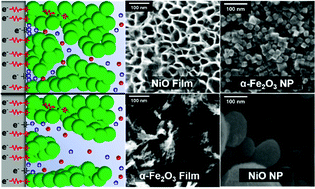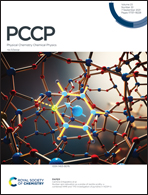Evaluation of electrochemical properties of nanostructured metal oxide electrodes immersed in redox-inactive organic media†
Abstract
This paper describes analysis of dropcast nanocrystalline and electrochemically deposited films of NiO and α-Fe2O3 as model metal oxide semiconductors immersed in redox-inactive organic electrolyte solutions using electrochemical impedance spectroscopy (EIS). Although the data reported here fit a circuit commonly used to model EIS data of metal oxide electrodes, which comprises an RC circuit nested inside a second RC circuit that is in series with a resistor, our interpretation of the physical meaning of these circuit elements differs from that applied to EIS measurements of metal oxide electrodes immersed in redox-active media. The data presented here are most consistent with an interpretation in which the nested RC circuit represents charge transfer between the metal oxide film and the underlying metal electrode, and the non-nested RC circuit represents the resistance and capacitance associated with formation of a charge-compensating double-layer at the exposed interface between the metal electrode and electrolyte solution. Applying this interpretation to analysis of EIS data collected for metal oxide films in organic media enables the impact of film morphology on electrochemical behavior to be distinguished from the effects of the intrinsic electronic structure of the metal oxide. This distinction is crucial to the evaluation of nanostructured metal oxide electrodes for electrochemical energy storage and electrocatalysis applications.



 Please wait while we load your content...
Please wait while we load your content...